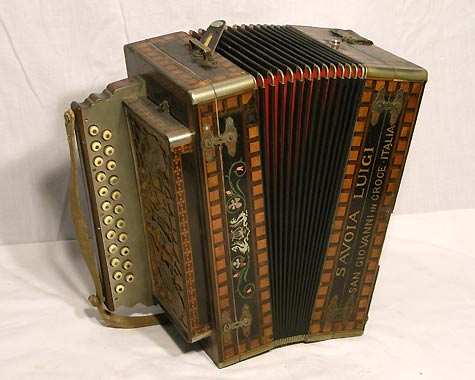
Akkordion
(bi- and unisonoric)
(Collection Oriwohl, Nr. IV-61)
Manufacture: Savoia Liugi (San Giovanni in Croce/Italy, founded 1871) 1926
This accordion is representative of the many developments towards the standard bass and was built in San Giovanni in Croce (northern Italy between Parma and the Lake Garda).
The right side has an alternating manual with two rows of diatonic buttons in the keys of A and E flat major and other supplementary tones.
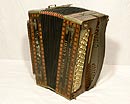

On the left side there are unisonoric bass and chord keys. In contrast to the previous Warsaw instrument, these are built into the left side of the case. The handle has disappeared and a hand strap has been fitted.
The way in which the chord mechanism works has undergone several decisive improvements, which form the basis of the later standard bass.
Whether this go back to the Savoia Luigi company, or adopted by other manufacturers is unknown.
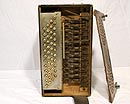
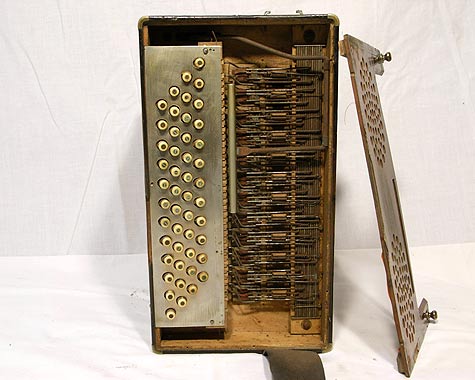
In the previous accordion, the keys of the single basses and chords were still aligned vertically to each other. Here they are arranged diagonally and already have the assignment of the later standard bass (except for the outermost row).
The standard bass will have two more rows and its manual will move from the side surface to the front, which will also result in a different playing position (see next instrument).
The chord mechanism now extends over the entire length of the manual.
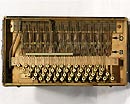

In contrast to the previous instrument, the chord mechanism with its horizontal control shafts and vertical levers, is now clearly recognisable as a prefabricated unit, which can be installed or removed with just two screws (left and right upper corner).
This modular principle is expression of industrial production, which from 1900 onwards also began to replace workshop production. (s. Graf: Das Akkordeon)
Below the levers are:
a) The valves row of the 12 single basses,
b) the valves row of the 12 chord tones of an octave.
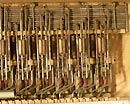
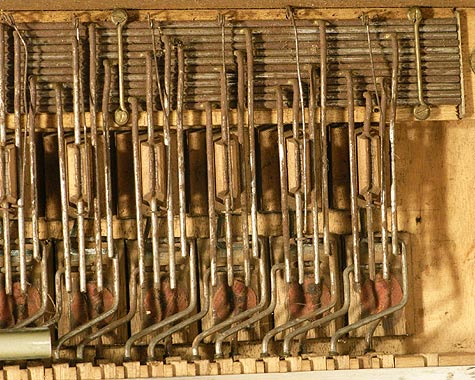
EThere is a decisive change in the signal flow:
On the previous instrument, a chord key moved a control shaft that opened several valves. Each chord required its own shaft, which limits the construction. Here, however, one key turns three control shafts simultaneously, each of which opens a valve of the desired chord tone. With 12 shafts, all valves of the 12 semitones of an octave can be controlled.
In retrospect, this simple change to the signal flow is the functional secret of the standard bass, which in this way with only 12 reeds create a multitude of chords.
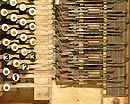

Key 1 controls the valve of a single bass. Key 2 and 3 control the corresponding major or minor chord. (The outermost row of keys 3 is only an auxiliary row that is connected to the innermost row).
The two lowest keys of the outermost row are dummies to provide buyers and the public with a symmetrically perfect manual.
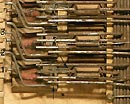
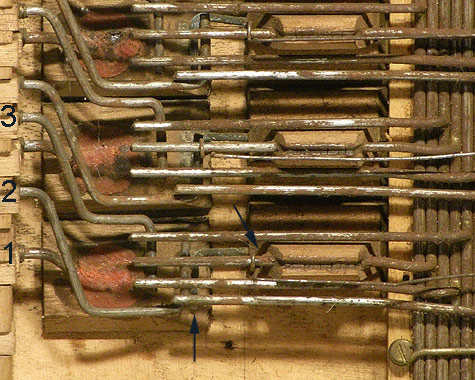
Key 1 leads to the decker of the single bass. The levers of Keys 2 and 3 raise the 2nd and 3rd levers (fifth and prime) plus the 1st or 4th lever (major or minor third), each counted from below. The vertically control shafts attached to the levers are rotated and all the levers soldered to the shafts are lifted with the valves.
The arrows point to the octave coupling of the single bass: The opening valve of the single bass ifts the lid of the octave tone via a lever, so that the bass sounds in 2-choirs.
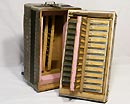
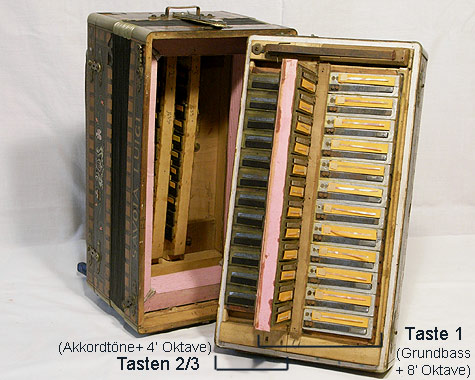
On the back of the chord mechanism on the right are the reedplates of the single basses with 16' reeds.
The soundpost in the centre, which has separated wind carries (presumably) on both sides 8' reeds as chord tones and a simultaneous octave chorus of the single basses.
The 4' reeds on the left form the octave chorus of the chord tones of the middle soundpost and share the wind supply with these.

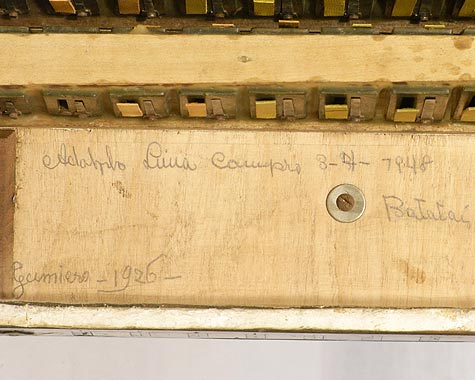
Handwritten entries from 1926 and 1948
The keys of A and E flat major on the melody side complement each other chromatically to an octave. Therefore more than this keys can be played (depending on the bisonoric system) and the inclusion of the chromatic coupled bass with all 12 major and minor chords makes sense. With different diatonic scales many chords would be out of scale and therefore not usable.
The described improvements to the chord system not only allow to dispense the bisonoric principle on the bass side, but all major and minor chords can now be played.
